Posted on 18 October 2013 by Annamarya Scaccia
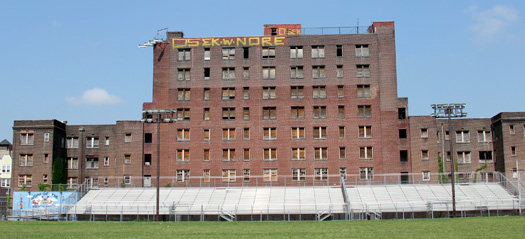
The Croydon (Archived Photo / West Philly Local)
As promised, we checked into a few other developments in the area for round two of our real estate updates (you can read Part I here). We’ve received somewhat definitive answers for some projects—others were harder to chase down. We’ll update this post once we learn more information.
- The Croydon, at 241 S. 49th Street, seems to be shaping up nicely. According to a receptionist for the Orens Brothers, property owners of the 127-unit building, the Croydon is still under renovation, with possible occupancy starting in February. (To this end, Philly.com reported earlier this month that about 30 of the 127 apartments will be available beginning in January.) The project, however, will be completely renovated by June 2014, with occupancy projected to begin by this date, according to the University City District’s The State of University City 2013/2014 report.
- In August, we also reported that Kensington-based Greensgrow Farms is eyeing the empty lot on 51st Street and Baltimore Avenue as part of their search for a West Philly hub, but its interest was in the proposal stage. According to Greensgrow’s Design and Media Coordinator Bryn Ashburn, they’re still in the proposal stage. Ryan Spak, owner of the lot, confirmed as much, saying more details have to be hammered out before they could move forward with anything official.
- It’s been a year since the old West Philadelphia High School was sold to New York-based developer Strong Place Partners and it has been radio silence since. Even a quick Google search yields little information since the sale of the building, which was sold for $6.5 million, was announced in late 2012. Rumor has it, though, that the sale fell through (or at least, didn’t close). We couldn’t confirm that gossip with Strong Place Partners, but a property assessment search still lists the School District of Philadelphia as the owner. We’ll post an update once we’re able to get more information.
–Annamarya Scaccia
Posted on 14 October 2013 by Annamarya Scaccia
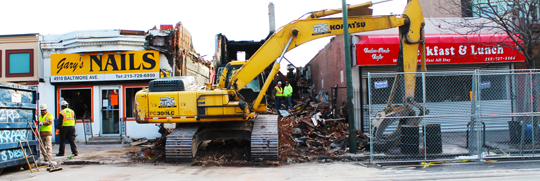
The building that housed Gary’s Nails Salon was damaged during demolition of Elena’s Soul Lounge in December, 2012. (Archive photo/West Philly Local)
After nearly a year of no movement, it seems that the site that was once home to Gary’s Nails Salon at 4910 Baltimore Avenue is now buzzing with renovation work.
Like Cedar Park Cafe, Gary’s Nails was extensively damaged during demolition of neighboring Elena’s Soul Lounge in December of last year, causing the nail salon to shutter its door. (The owners were cited with a violation on December 28, 2012 that claimed the property was “imminently dangerous.”) While Cedar Park Cafe reopened its doors at 4912 Baltimore Ave. mid-August, there was still no word on Gary’s Nails until a few weeks ago when construction work began on the building.
According to one worker at the scene, Gary’s Nails is only undergoing renovation on its roof. In particulars, that means the erection of roof framing and installation of a low-slope built-up roof assembly, describes an active alternation permit issued by Philadelphia License and Inspections on June 21, 2013. The active permit, which was updated October 8, also calls for the partial construction of a masonry wall.
While, according to the Board of Revision of Taxes, the property that once housed Gary Nails is still owned by Ye Me Chi, there is no indication if Gary’s Nails will return as a business (the property’s exterior condition is listed as “vacant”). West Philly Local was unable to get in touch with the owner for confirmation. We’ll post an update as soon as we have more information.
–Annamarya Scaccia
Posted on 03 October 2013 by Annamarya Scaccia
Once home to the Philly Diner, which closed two years ago after 10 years of fueling college students, the lot at 3901 Walnut Street may soon be the site of an office building, The Daily Pennsylvanian recently reported.
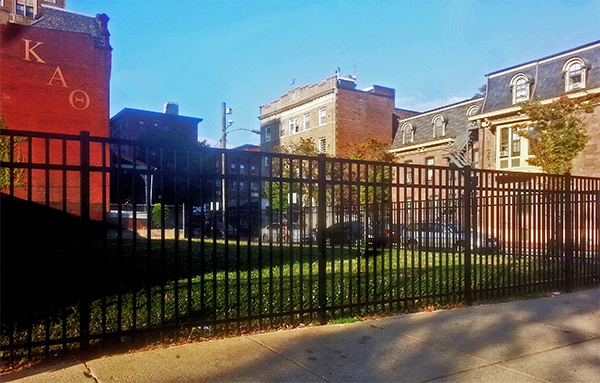
3901 Walnut Street, former site of the Philly Diner / Photo by Annamarya Scaccia (West Philly Local)
The University of Pennsylvania, which owns the plot, plans to erect a six-story office building that will house some of the institution’s administrative offices displaced by the recent construction of the Ronald O. Perelman Center for Political Science and Economics off 36th and Walnut Streets.
According to Penn’s Division of Facilities and Real Estate Services, the project is currently in the proposal stage, with its design and purpose yet to be green lit (funding was already approved, however). The fate of the building currently rests with Penn’s Facilities and Campus Planning Committee of the Trustees, which will meet November 7 to decide.
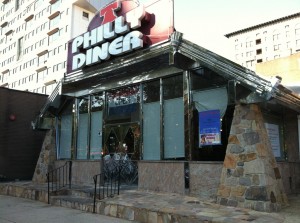
The Philly Diner closed in October, 2011 and the building was demolished last year. (Archive photo / West Philly Local)
A zoning permit posted at the site, though, does detail Penn’s application to build a six-story office building featuring a green roof, roof top structures, and three bicycle spaces. The zoning permit was approved on September 17. Penn’s Facilities and Real Estate Services plans to release official information and plans on the project after the November meeting. We will update our readers once we hear from the office.
In 2009, the Philly Diner went from a 24-hour joint to enacting 1 a.m. and 2 a.m. closing times after a late-night shooting occurred outside the university-owned building in February of that year. The owner decided not to renew the lease in 2011, forever closing the doors of a popular—yet troubled—local favorite.
–Annamarya Scaccia
Posted on 02 October 2013 by Annamarya Scaccia
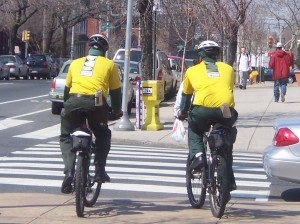 University City is a global city—at least, that was the theme of this year’s The State of University City address hosted by the University City District and the University of Pennsylvania.
University City is a global city—at least, that was the theme of this year’s The State of University City address hosted by the University City District and the University of Pennsylvania.
The 2013/2014 program, held Monday afternoon at the International House Philadelphia on 37th and Chestnut Streets, focused on University City’s global reach. University of Pennsylvania Executive Vice President Craig Carnaroli and Dr. Ezekiel J. Emanuel, Vice Provost of UPenn’s Global Initiatives, both discussed how their institution, as well as Drexel University and University of the Sciences, fosters an international neighborhood connection through its diverse student body and international academic, cultural and social partnerships.
In regards to the larger University City community, University City District Executive Director Matt Bergheiser pointed to recent real estate and commercial developments, cultural and community events, and the neighborhood’s shifting demographics as factors in creating “a global University City.” Each speaker, however, stressed that, while University City does impact the global community at large, people living and working in the neighborhood must continue to promote and support initiatives that are global in practice.
While the panel itself presented numbers relative to this year’s theme, attendees were also given a packet detailing more statistics about University City. In numbers:
- 23 percent of University City households speak a language other than English at home.
- 17 percent of University City’s residents is foreign-born, five percent more than Philadelphia’s overall population.
- According to Dr. Emanuel, the University of Pennsylvania has over 7,000 foreign-born students a year. Combined with Drexel University, that’s about 9,000 foreign-born students. (Dr. Emanuel noted that UPenn doesn’t do its best at integrating University City’s foreign-born residents, which he expects to change with the construction of the university’s Perry World House.)
- Nearly $3.5 billion of new or recently completed real estate projects.
- University City has over 72,000 jobs, with a 93 percent office occupancy rate and 89% retail occupancy rate.
- About 16 academic, commercial, medical/biomedical, or residential/mixed-use properties being constructed within the next three years.
- Average property values have tripled since 2000, from over $100,000 to over $300,000 in 2012.
- Cost of living in University City is 28 percent lower than Center City.
- The number of 20- to 34-year-olds living in University City has increased by 21 percent between 2000 and 2010, with 20- to 24-year-olds making up the highest number of residents.
- Racially, the population breaks down as follows: 25 percent Black or African-American, 20 percent Asian, and 50 percent White.
- In 2012, rate of serious crimes in University City was down 50 percent since 1998, compared to just under 25 percent for the city overall.
- Between 1998 and 2012, University City experienced a -44 percent change in rate of violent crime per 1,000 residents, compared to a -16 percent change in the City of Philadelphia. Continue Reading
Posted on 27 September 2013 by Annamarya Scaccia
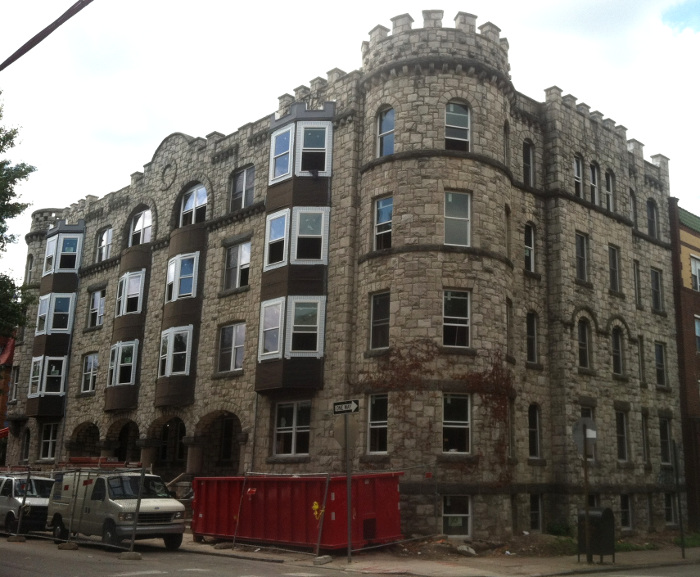
The Sedgley Apartments. Photo by Mike Lyons/West Philly Local.
UPDATE 9/27/13, 2:30 P.M. We heard back from David Hess this afternoon, who let us know that the owners of Dunkin’ Donuts plan to open to shop in late October, pending there are no delays in construction.
West Philly Local wrote about many real estate developments taking place in the neighborhood–some of which are welcomed, some of which are criticized. In an effort to keep you up-to-date on a few of these projects, we’ve complied Part I of a list of building updates. Part II is coming soon.
- In April, we reported that Renaissance Healthcare & Rehabilitation Center at 4712 Chester Avenue will undergo some renovations, including the demolition of two vacant, dilapidated houses adjacent to the property. When we stopped by the site this week, we saw that the buildings have been mostly torn down, with the foundation of the structures still standing three-quarters of the way. Two people were also scavenging the mountains of bricks and debris that littered the fenced-in lot. Nursing Home Administrator Camella Kane, who spoke with us originally, said the center had “nothing to report at this time,” even when pressed for further information.
- In June, we let you know that Dunkin’ Donuts is coming to 41st Street and Chester Avenue, opening up shop in the group floor of the multi-tenant building at 4100 Chester Avenue this fall. Well, observation makes it seem as if everything is still on track, with a sign for the fast-food coffee joint having gone up late this summer. As for the interior, wall beams have been erected and construction seems on the steady. We couldn’t get a confirmation of progress from David Hess, owner and manager of the multi-unit property, by the time of publication.
- As for the Sedgley Apartments, the historic building undergoing renovations, renovation work should be finished in a few months, said Noah Ostroff, principal at 400 S. 45th Street LLC, which owns the Sedgley. According to Ostroff, the team is making “good progress” and the apartments—which he said will be affordable and competitively priced—should be available for rent come early January. “We believe [the Sedgley] is going to be one of the more luxurious rental buildings in the area,” Ostroff told West Philly Local.
–Annamarya Scaccia
Posted on 13 August 2013 by Annamarya Scaccia
Housing prices are bouncing back all over Philadelphia, except in West Philly, according to a recent report.
Second quarter home prices fell 7.8 percent in University City compared to the first quarter and an average of 5.9 percent in other parts of West Philly, the Fels Institute of Government analysis shows.
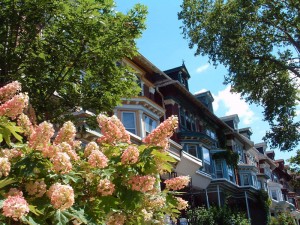
Photo by Katrine Lvovskaya.
Prices around the city bottomed out about 18 months ago and prices in many neighborhoods have begun to bounce back (as much as 8 percent in parts of North Philly), while prices in this side of the Schuylkill have lagged. Not to worry, said Kevin Gillen, a senior research consultant at Fels and the report author. He believes the down tick in house value is just a short-term phenomenon and can be regarded as more of a “correction” in pricing, particularly for University City, which saw double-digit home price rises for the last 10 to 15 years.
“The prices are still way above where they were 10 years ago. It’s like 100 steps forward and 15 steps back. Think of it as a mean reversion,” said Gillen, who believes the long-term trend for the area is still optimistic. “It’s positive going forward but a more modest positive than you had in the past.”
Average home prices across the city have increased 3.1 percent compared to the second quarter last year.
This over-inflation during the decade’s housing boom, said Gillen, can be attributed to University of Pennsylvania renewed, three-fold investment in the neighborhood: the creation of the University City Business District, which led to better public services; a mortgage program aimed at UPenn faculty and staff to encourage them to invest in the neighborhood; and the opening of the Penn Alexander School at 43rd and Locust Streets 10 years ago.
Continue Reading
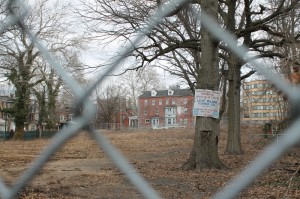 In August, we reported that Friends of Clark Park (FOCP) released a statement in favor of the design plans proposed for 4224 Baltimore Ave, the project under construction at the lot on 43rd Street and Baltimore Avenue. That seems to be the last we’ve heard about the proposed project—4224 Baltimore’s website and Facebook page haven’t been updated since September, when Philly.com ran an article on Omar Blaik of U3 Ventures, owner of the development firm acting as liaison for the project. According to the article, since 4224 Baltimore’s projected design calls for a five-story building–two more than allotted per current zoning–Blaik has to “persuade” City Council to change zoning for the site. We were unable to reach U3 Ventures for further detail by the time of publication.
In August, we reported that Friends of Clark Park (FOCP) released a statement in favor of the design plans proposed for 4224 Baltimore Ave, the project under construction at the lot on 43rd Street and Baltimore Avenue. That seems to be the last we’ve heard about the proposed project—4224 Baltimore’s website and Facebook page haven’t been updated since September, when Philly.com ran an article on Omar Blaik of U3 Ventures, owner of the development firm acting as liaison for the project. According to the article, since 4224 Baltimore’s projected design calls for a five-story building–two more than allotted per current zoning–Blaik has to “persuade” City Council to change zoning for the site. We were unable to reach U3 Ventures for further detail by the time of publication.












Recent Comments